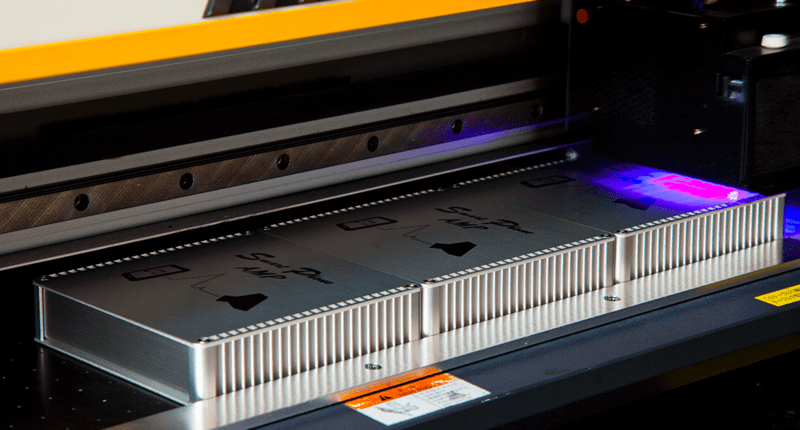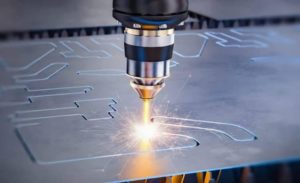Inkjet printing or laser marker engraving, which is better? This is a question many industries and businesses face when looking to mark or engrave their products. Both technologies have their own set of advantages and disadvantages, and choosing the right one for your application can make a significant difference. In this article, we will explore the basics of Inkjet Marking and Laser Marking, their applications, materials, and differences, as well as the pros and cons of both systems.
What is Inkjet Marking, Technologies Basics
Inkjet printing is a non-contact printing technology that uses a series of tiny nozzles to eject ink droplets onto a substrate. This process creates high-quality marks on a variety of materials, including plastics, metals, glass, and ceramics. Inkjet marking technology is available in two types: Continuous Inkjet (CIJ) and Drop-on-Demand (DOD).
- Continuous Inkjet (CIJ) technology is a printing process that creates a continuous stream of ink droplets that are directed towards the substrate. The unused ink droplets are recycled back into the ink reservoir, making it an efficient and cost-effective option.
- Drop-on-Demand (DOD) technology, on the other hand, creates marks by ejecting ink droplets only when needed. This technology is ideal for marking small to medium-sized products that require high-quality marks.

What is Laser Marking, Technologies Basics
Laser marking is a non-contact marking technology that uses a laser beam to create permanent marks on a substrate. This process can be performed on a wide range of materials, including metals, plastics, ceramics, and glass. Laser marking technology is available in three types: CO2 laser, fiber laser, and UV laser.
- CO2 lasers are best suited for organic materials, such as wood, leather, and plastics.
- Fiber lasers, on the other hand, are ideal for marking metals, including steel, titanium, and aluminum.
- UV lasers are commonly used for marking plastics, glass, and silicon.
Applications & Materials for Inkjet Marking
Inkjet marking is ideal for applications that require high-quality marks on a variety of substrates. This technology is commonly used in the food and beverage, pharmaceutical, and cosmetics industries to mark products with expiry dates, lot codes, and other information. Inkjet marking can be performed on a range of materials, including plastics, metals, glass, and ceramics.
Applications & Materials for Laser Marking
Laser marking is suitable for applications that require permanent and high-contrast marks on a variety of materials. This technology is commonly used in the automotive, aerospace, and medical industries to mark parts and components with unique identification numbers, logos, and other information. Laser marking can be performed on a wide range of materials, including metals, plastics, ceramics, and glass.
What are the Differences Between Laser Marking Machine and Inkjet Printer?
The main difference between laser marking machines and inkjet printers is the technology used to create marks:
- Laser marking uses a high-powered laser beam to create permanent and high-contrast marks, while inkjet printing uses ink droplets to create high-quality marks.
- Laser marking is typically faster and more precise than inkjet printing, but inkjet printing is more versatile and can be used on a wider range of substrates.

Advantages and Disadvantages of Inkjet Printing System
+ Inkjet printing has several advantages, including its ability to produce high-quality marks on a range of substrates, including curved surfaces.
+ It is also a cost-effective option for marking small to medium-sized products.
– However, inkjet printing can be slower than laser marking and may require more maintenance.
Advantages and Disadvantages of Laser marking System
+ Laser marking has several advantages, including its ability to create permanent and high-contrast marks on a wide range of materials.
+ It is also a faster and more precise option than inkjet printing, making it ideal for high-volume production.
– However, laser marking machines can be more expensive and may require more specialized training to operate.
Which technology fits your application – Inkjet vs. laser marking?
When choosing between inkjet printing and laser marking, it’s important to consider your specific application needs. Inkjet printing is ideal for marking on a variety of substrates, including curved surfaces, and is a cost-effective option for small to medium-sized products. Laser marking, on the other hand, is suitable for creating permanent and high-contrast marks on a wide range of materials and is a faster and more precise option for high-volume production.
If your application requires high-quality marks on a variety of substrates, inkjet printing may be the better option for you. If your application requires permanent and high-contrast marks on a wide range of materials and high-volume production, laser marking may be the better choice.
Why Choose Laser Marking by Superior Laser Marking
Superior Laser Marking is your best choice for laser marking services.
- Our professional team is highly experienced in the laser marking industry, and we use the latest equipment and technology to deliver high-quality laser markings every time.
- Our laser markers can produce precise markings on the entire range of materials commonly used in manufacturing.
- We use state-of-the-art software to ensure that our markings are always accurate and of the highest quality. With our commitment to quality and customer satisfaction, you can be sure that when you choose Superior Laser Marking, you are getting the best laser marking services available.






